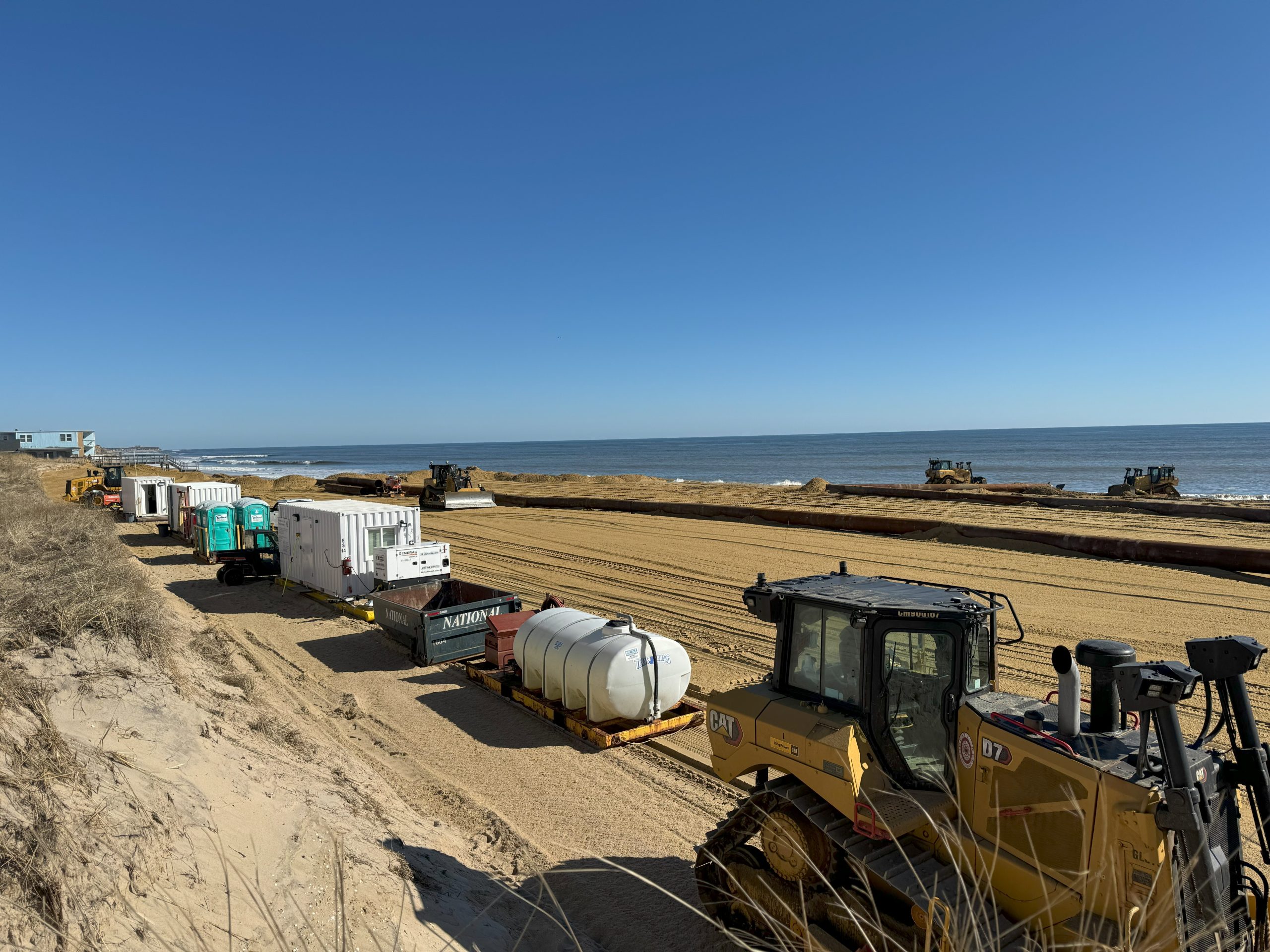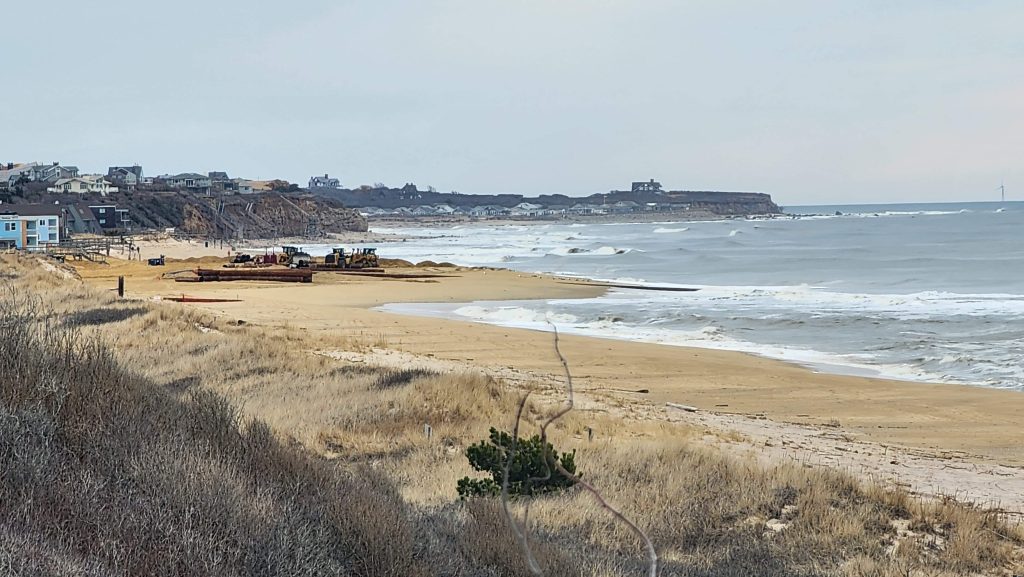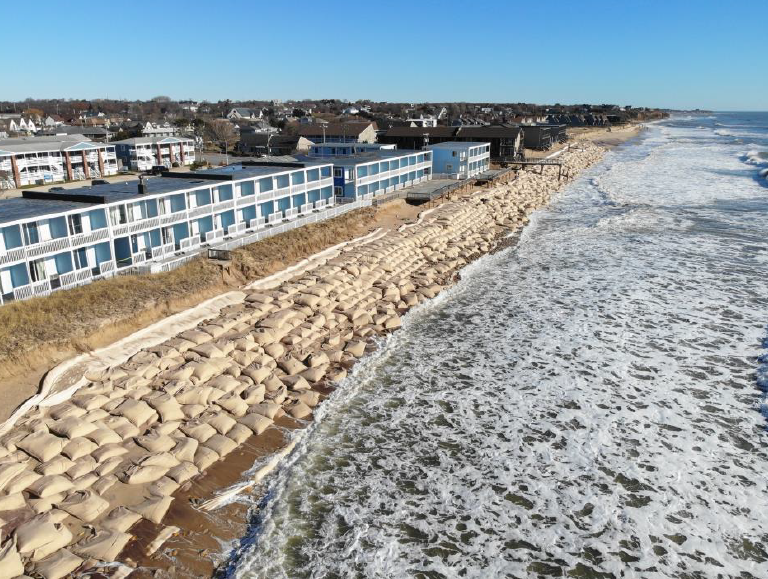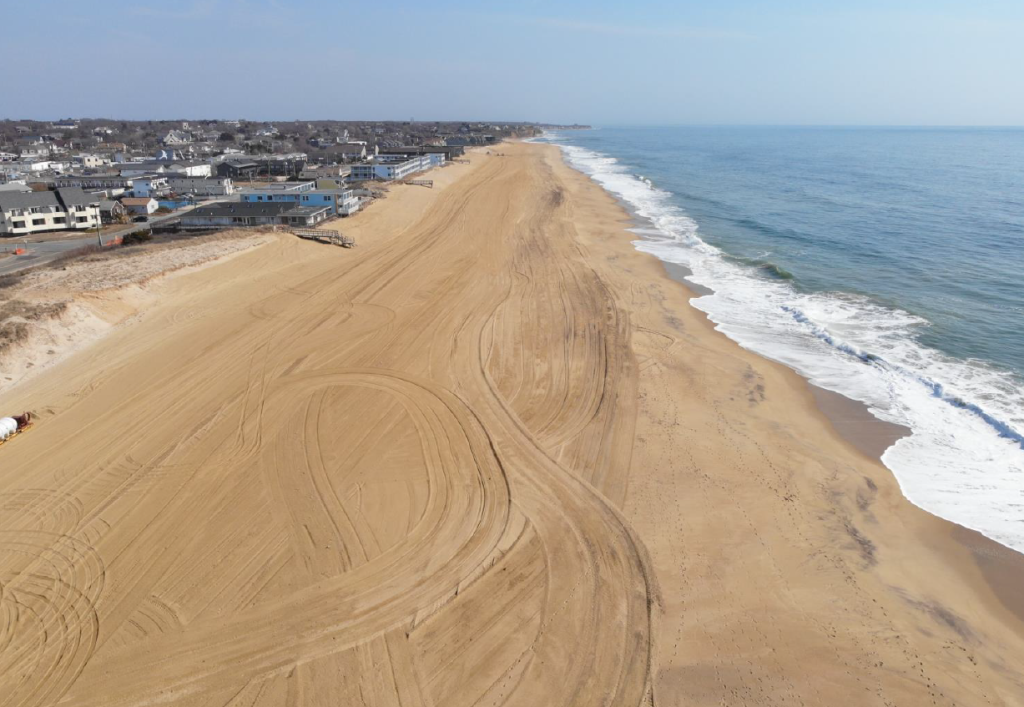A new beach in 21 days, hope you didn’t blink.
By Mike Wright
Summer in Montauk and The Hamptons has always revolved around the ocean beaches. Even if your visit to the area is more focused on nights out or fishing the high seas,, the ocean beaches are our crown jewels.
But over a handful of weeks this past winter, Montauk’s beaches were, essentially, completely erased – and then rebuilt, better than ever.
The obliteration of the beaches actually started late last summer, with the swells from two passing hurricanes that sent towering swells ashore. The beaches last summer in Montauk were fairly wide, but by October they had been washed away for the most part, the sandbags that protect the downtown already exposed in many places.
Then, in December and January and series of severe nor’easters that happened to coincide with high moon tides, hit Montauk like a freight train and left the oceanfront nearly unrecognizable from the previous summer.
The entire 3,000-foot sandbag revetment was exposed for the first time since it has been installed in 2014. The last straggling remnants of natural dunes at Ditch Plains were finally washed away and waves surges ashore, damaging one home and threatening others.
But it just so happened that just a few weeks after the worst of the storms passed, the U.S. Army Corps of Engineers arrived to conduct a massive $11 million “beach nourishment” project in Montauk that had been promised a decade ago in the wake of Superstorm Sandy.
The project was an engineering marvel and left Montauk with the wide sandy beach you see today (despite more strong storms slamming the coastline this spring).
For three weeks in February a nearly 500-foot barge vacuumed up thousands of tons of sand at a time from the ocean floor off Gurneys Resort and toted it to a spot off the beaches downtown where a steel pipe was anchored to the sea floor.
From there, the ship pumped the sand, mixed with sea water, onto the beach under enormous pressure. At the onshore end of the pipe, the slurry of sand an sweater gushed out onto the shoreline like broken oil geyser.
“More than 600,000 tons of sand were pumped ashore in all.”
As it gushed, a gang of bulldozers pushed the accumulating sand seaward – sometimes driving the vehicles right into the breaking waves. Gradually, foot by foot, day by day, a new beach grew.
By the time the work was done 21 days later, the beach that had been essentially non-existent had grown to 100 feet wide and the sandbag revetment was nowhere to be seen. More than 600,000 tons of sand were pumped ashore in all.
The Army Corps does not expect the new beach to last forever, given Montauk’s exposure to the energy of the North Atlantic, especially in winter and during the late hurricane season. The project design calls for the dredges to return in 4 years to restore what sand is lost between now and then, and to continue doing so for the next 30 years.
Local government says that they are going to use that time to devise a strategy for allowing development in the downtown to shift landward, away from the ocean, to account for rising sea levels in the coming century.
Montauk may look to the casual observer more or less the same this summer as it did last summer. But our beautiful downtown actually lives in the grips of constant turmoil in the push and pull between Mother Nature.







